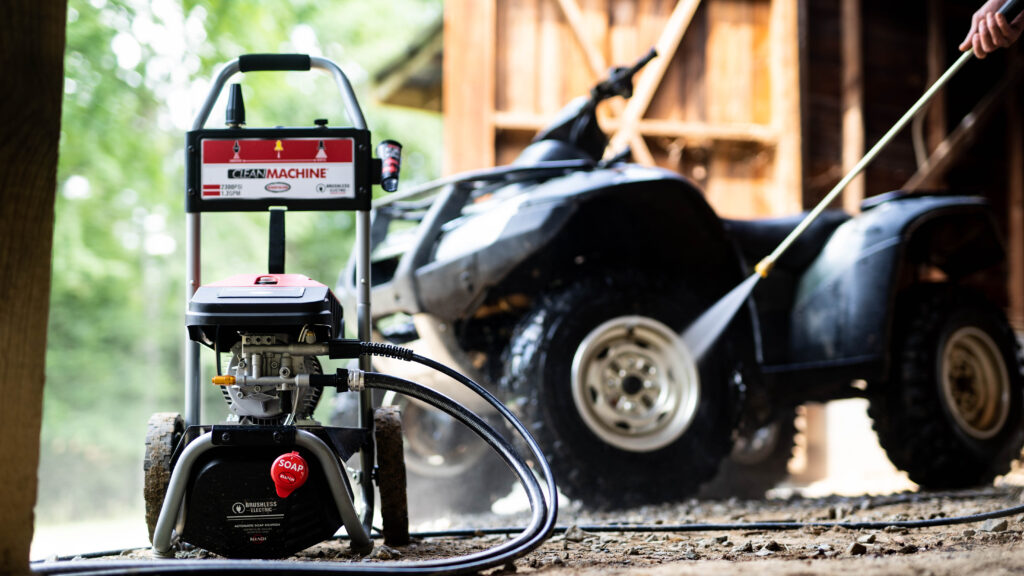Check for debris or corrosion. When first hooking up the garden hose, always inspect the inlet screen for debris or corrosion. Clean the screen or replace it if the corrosion is severe. Remember to always purge the air from the garden hose by allowing the water to run for 30 seconds before connecting it to the pressure washer. Once the garden hose is connected, turn the water back on then squeeze and hold the trigger to remove any further pockets of air from pump or high pressure hose.
Check the nozzles. Lastly, inspect the nozzles to make sure they are free of debris and are in good condition. Debris in the nozzles can keep the water from flowing properly. If you cannot clean them with the nozzle cleaning tool or if find they are damaged, replace them with new nozzles.
Check your water source. Does your water source meet the minimum requirements of 5 gallons per minute (GPM) at 20 pounds per square inch (PSI)? If you are unsure, have a licensed plumber review your system. Make sure the garden hose is no longer than 50ft (30ft if you have a well).
Check your electricity. With electric pressure washers, the source of electricity is very important. If you have low line voltage, older wiring or use an extension cord with the pressure washer, your unit may have low pressure or may even stall. A dedicated 15 amp circuit is usually recommended.
Check with an electrician. If you are unsure of your power source or the condition of your house wiring, make sure to have a licensed electrician review them. Never use an extension cord with the pressure washer. The cord adds resistance to the circuit which in turn lowers the voltage.
If you need further assistance, check out our service locator or contact our Customer Service Center at 1-877-362-4271 to find where your nearest service center is located.
